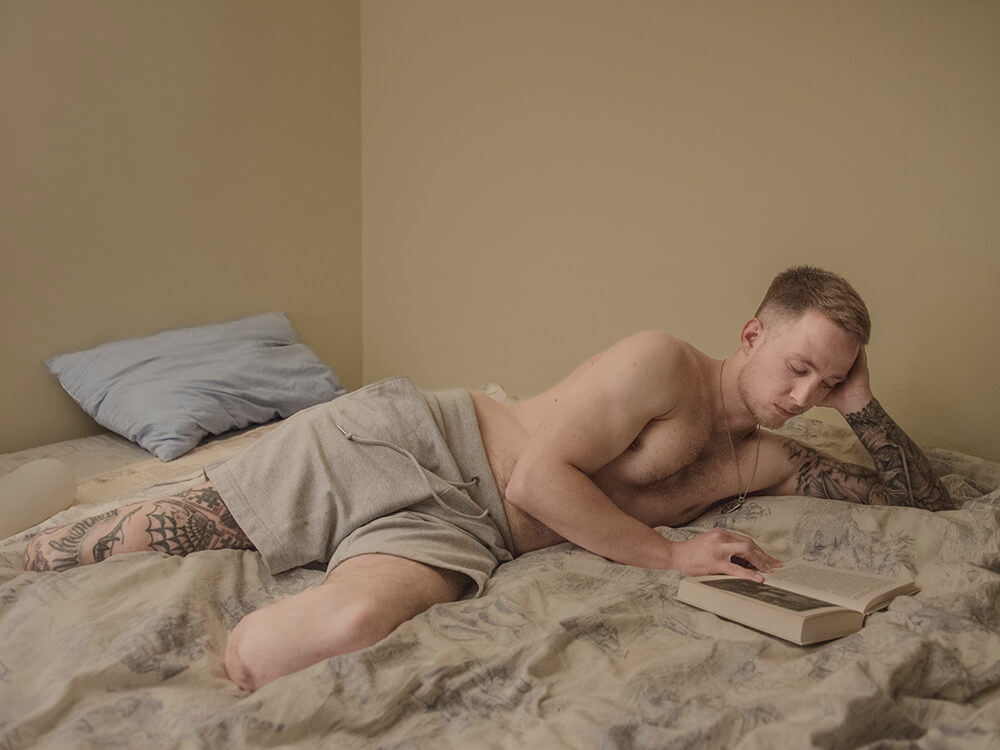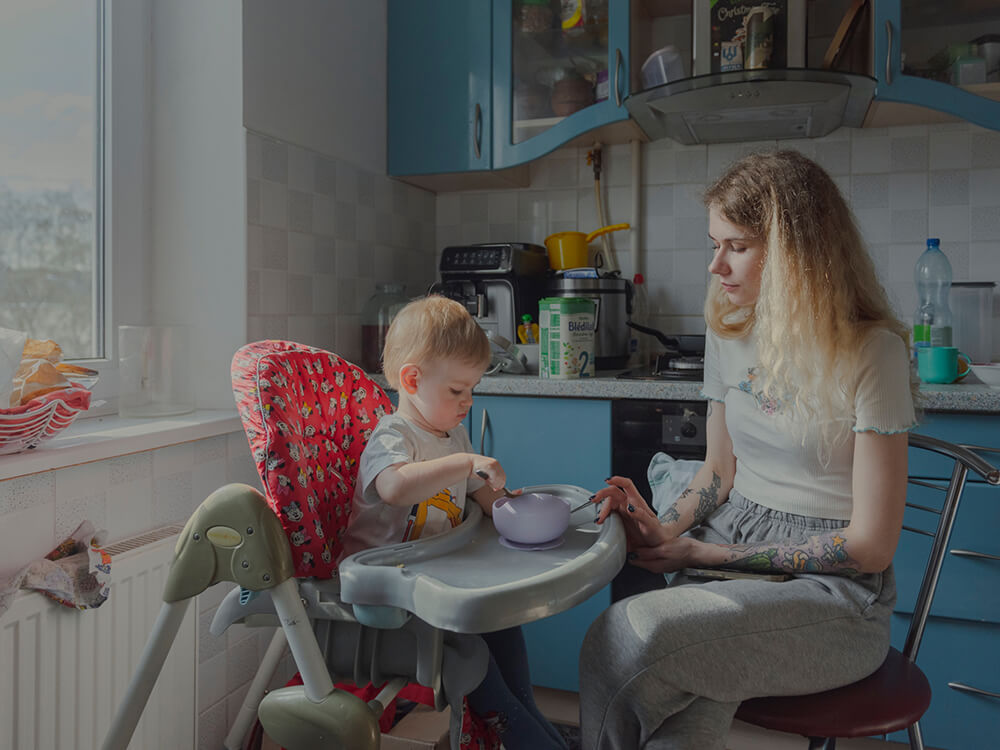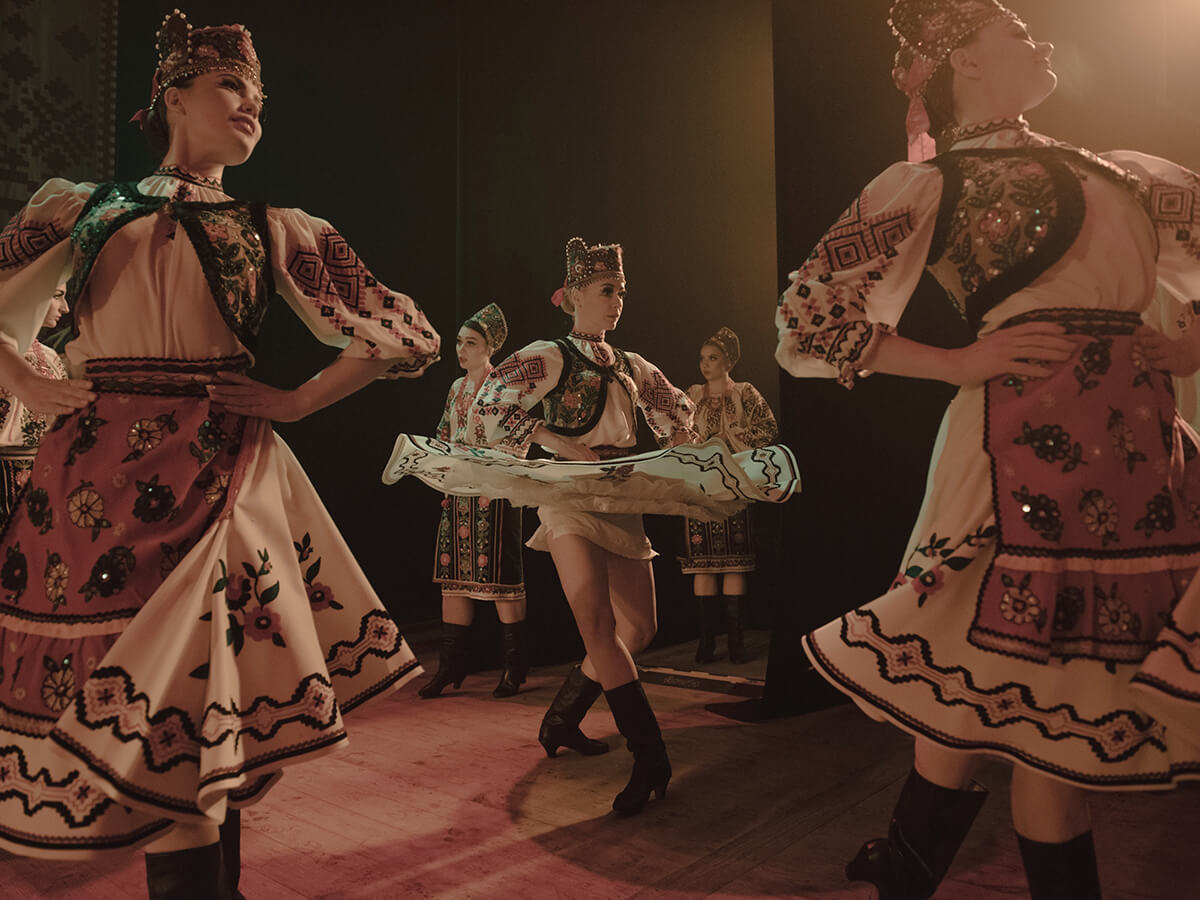INTERVIEW
In Pursuit of the Human Spirit
WITH LAETITIA VANCON
AN INTERVIEW WITH LAETITIA VANCON
“Themes such as identity and the impact of events bigger than ourselves resonate deeply with me because they are universal yet deeply personal, and they often intersect in ways that reveal the complexity of human experience.”
Laetitia Vancon won 1st Prize in our recent Youth competition with a sensitive portrait of a young Ukrainian soldier that captured the complexity of experience away from the frontlines of war. That image was shot for a New York Times feature, and is indicative of her approach – to document with empathy and intimacy stories of individuals navigating huge environmental and geopolitical events.
In this wide-ranging interview we asked Laetitia about the project, her approach, the moral responsibility of photojournalists, and her advice for others looking to work on assignment with esteemed publications. And her answers did not disappoint…
Dear Laetitia, congratulations on winning our Youth competition! What did you make of the judges’ comments?
I am deeply grateful for this recognition. I found the judges’ comments to be extremely insightful, moving and inspiring. Karolin Klüppel’s observation about the contrast between the young man’s innocent pose and the harsh reality of his experience particularly touched me because, in each of my photographs, I strive to capture an intention that is not always obvious. Here, I intended to highlight the universal importance of capturing such moments, especially in today’s world, where the effects of war are felt everywhere, but interest and engagement are diminishing. The fact that Karolin resonated strongly with this intention confirms my approach. It gives me hope that these stories will continue to bring us together, mobilize us, and support the Ukrainian people.
Life Framer’s comments on the complexity and layers of the image, subtly showing Oleksandr’s amputated legs with the use of soft tones and simple colors to juxtapose the painful reality of war, resonated deeply with me, too. These elements are crucial in Oleksandr’s portrait, enhancing its power and, I hope, conveying the profound impact of the conflict on individuals’ lives.
It’s from your series The Other Battlefields, which examines the impact of war on the youth of Ukraine, and I believe was shot for the New York Times. How did such a project come about?
From the start of the Russian invasion, I began documenting on assignment for the New York Times the refugee crisis, and then I decided to enter a war-torn country for the first time to capture how people were surviving and adapting. It was in June 2022, in Odesa, when I saw young graduates dancing in front of sandbags, using art to express their struggle against the war, and it was then that I understand how crucial it is, especially from the perspective of the youth, to preserve the stories of resilience and the hidden scars that will shape Ukraine’s future.
Can you tell us a little bit more about the man in your winning images, and the circumstances behind this particular shot?
It depicts Oleksandr Budko who, in his youth, was inspired by heroic tales of Ukrainian fighters, fostering a deep patriotism that led him to enlist in the military as Russia invaded in February 2022. After defending Kyiv, he pursued a campaign in Kharkiv, fulfilling a longstanding aspiration influenced by the heroic narratives that molded his sense of duty. But, the trajectory of Oleksandr’s life took an unforeseen turn in an instant as a shell landed near him, severing his lower legs.
His initial response to the sudden and profound change was marked by a mix of emotions — pain, panic, fear, and a surreal disbelief in the reality of the situation. In the aftermath of the life-altering incident, Oleksandr underwent an extended period of recovery in hospitals and rehabilitation centers. Despite the physical challenges, he embarked on a transformative journey of adapting to his new reality. Rather than viewing his condition as a disability, he embraced it as an opportunity for a different kind of service. Now he channels his resilience into cultivating a robust social media presence, using the platform not only to advocate the importance of a positive mental outlook but also to drive reform in the army’s care of wounded soldiers. In no time, he became the face of inclusion, fighting for rights of veterans. In many ways, this has become Oleksandr’s new mission — a mission that transcends physical boundaries, demonstrating an unwavering commitment to the well-being of his fellow soldiers and the broader cause of their nation.

LAETITIA’S WINNING IMAGE FOR YOUTH




You talk about empathy and intimacy being central to your approach, and that’s apparent in The Other Battlefield – a subject that demands empathy, understanding and trust with the subjects to create this feeling of intimacy. How do you go about finding the individual people and stories within a topic like this, and then building trust, and finally composing your images?
When I approach a project where—in my opinion—empathy and entering into the intimacy of people’s lives are essential, I start by conducting thorough research. This involves reaching out to a wide range of organizations, institutions, groups, and collectives related to the subject. Often the help of a fixer is fundamental.
I also use social media to scout and find protagonists whose stories deserve to be told. Once these individuals are identified, I organize interviews to better understand their narratives, challenges, state of mind, openness, level of engagement, and willingness to participate in such a project. From these initial interactions, I approach each individual story with honesty and sincerity, clearly explaining my intentions. Over time, regular meetings help to gradually establish a foundation of trust and mutual respect, which is crucial for capturing the depth of their experiences.
The intimacy I seek to capture in my work is the direct result of this patient and respectful process, ensuring that each image reflects representative fragments of their lives.
You make use of flat light and a fairly limited tonal range in this work, which can be seen to emphasize the sense of loss and grief in the lives of the subjects. Was this a conscious visual choice? And do you make similar considerations around color and equipment when photographing different topic?
When it comes to editing my photos I adjust the exposure, contrast, highlights, blacks, and saturation to achieve a soft, elegant, and natural look. The color palette, which leans towards pastel tones, is inspired by the great masters of painting that I admire, such as Edgar Degas and James Abbott McNeill Whistler, who created incredible atmospheric compositions with their color palettes.
However, as a photojournalist, it’s not about altering the existing tones. Therefore, I need to carefully consider the timing of the shots and the composition of each image to achieve the desired result. It is well known that colors have the power to evoke emotions, as to resonate with our psychological responses. I believe that the way I edit my photos reveals, in some way, what I felt.
You shoot for several esteemed publications – the New York Times as mentioned, as well as National Geographic, Spiegel and Vanity Fair. I’m sure there will be many photographers interested in following such a pass. How did you find your way into this editorial field? Are there tips you can pass on?
Breaking into the field of editorial photography, especially with prestigious publications, is a journey that requires a mix of skills, perseverance, networking, and strategic thinking. I believe it’s important, first and foremost, to build your portfolio, showcasing a range of work that highlights your versatility and technical skills. Most importantly, it should reflect your ability to tell captivating stories through your images, which is essential for editorial work.
Next, it’s crucial to understand the editorial market. Each publication has a specific style and type of content they publish. Study them carefully and tailor your portfolio to match their editorial needs. Also, consider making well-crafted pitches. A strong proposal, including a compelling story idea, relevant image samples, and a clear understanding of the publication’s audience, can make a significant difference.
To build valuable professional relationships, attend industry events, workshops, and exhibitions where you can meet editors and photo directors. Establishing relationships over time is key to breaking into the field. I also think that today, having an online presence and being active on social media is necessary. Even though I am personally not very consistent, I’ve noticed that it helps not only to stay connected with the photography community and the editorial world that interests us but also to expand it. Often, editors scout for talent online.
Finally, an important piece of advice: perseverance, patience, and consistency. Success in this field often requires years of dedication and refinement. The path is not easy, but with perseverance and constant effort, it is possible to reach prestigious publications.





I’m drawn to a well-known quote by Salman Rushdie: “A photograph is a moral decision taken in one eighth of a second”. Do you think about morality when photographing difficult subjects? How do you navigate objectivity and personal interest when on assignment?
That quote is particularly thought-provoking, and it resonates with me on many levels. Personally, I don’t believe that we can ever be entirely objective as photographers. Our backgrounds, experiences, and conditioning inevitably shape the way we see the world and, consequently, how we choose to capture it.
When photographing difficult subjects, I am certainly aware of the moral dimensions of my work. Every time I press the shutter, I’m making a choice—not just about composition or lighting, but about what story I’m telling and how it will be interpreted. These choices are influenced by my own values, beliefs, and the context in which I’ve been raised or have lived.
Navigating the balance between objectivity and personal interest is a constant challenge. I strive to approach each assignment with a sense of responsibility, being mindful of the impact my images might have on the people and situations I’m documenting. However, I also acknowledge that my perspective is not neutral. I believe that acknowledging this inherent subjectivity is crucial; it allows me to be more honest with myself and my audience. Rather than aiming for an unattainable objectivity, I focus on being transparent about my intentions and aware of the potential biases that may influence my work. In doing so, I hope to create images that are not only truthful to the moment but also reflective of a deeper understanding of the complexities involved.
Whether it’s photographing stories in Ukraine, Albania or the Outer Hebrides, or turning the lens on yourself for more personal projects, there are themes that run throughout: identity, youth, and the impact of events bigger than ourselves. Have you reflected on why this is, what draws you to these particular throughlines?
Yes, I’ve certainly reflected on the themes that consistently emerge in my work. These themes resonate deeply with me because they are universal yet deeply personal, and they often intersect in ways that reveal the complexity of human experience. Identity, for instance, is a multifaceted concept that we all grapple with, whether consciously or unconsciously. It’s shaped by our surroundings, our upbringing, and the events we live through. When I photograph stories in places like Ukraine, Albania, or the Outer Hebrides, I’m drawn to how people’s identities are influenced by their cultural, social, and political environments. These contexts often amplify the questions of who we are and how we define ourselves in the face of change or adversity.
Youth is another theme that fascinates me because it’s a period of life filled with exploration, vulnerability, and transformation. Young people are often at the forefront of change, whether they are consciously leading movements or simply adapting to the world around them. Photographing youth allows me to capture moments of transition, where the past, present, and future are all in flux. There’s a rawness and energy in youth that I find compelling, and it’s a lens through which broader societal changes often become more visible.
Finally, the impact of events bigger than ourselves is a theme that feels particularly relevant in today’s world. We are constantly being shaped by forces beyond our control—be it war, migration, economic shifts, or climate change. These events leave indelible marks on both individual lives and collective identities. I’m drawn to documenting how people navigate these forces, how they adapt, resist, or find meaning in the midst of upheaval.
Ultimately, I’m interested in the stories that lie at the intersection of the personal and the political, the individual and the collective. These throughlines are not just abstract ideas; they are lived experiences that reveal the resilience, fragility, and adaptability of the human spirit. That’s what draws me to them, and why they continue to be central to my work.
What would be your dream assignment?
Honestly, I am already having my dream assignments with The New York Times. Thanks to the trust and understanding I have from my editors, I can work on stories that matter to me, like those at the intersection of cultural identity and resilience in communities undergoing significant transformation, whether due to environmental changes, political upheaval, or social evolution. I’m particularly drawn to regions where traditions are deeply rooted but are being challenged or reinterpreted in the face of contemporary pressures. I feel extremely grateful and lucky that my editors not only support but also encourage me to pursue these meaningful narratives, giving me the creative freedom and platform to share these important stories with a broader audience.
What’s the best piece of advice you’d pass on to your younger self if you could?
If I could pass on one piece of advice to my younger self, it would be to carefully manage your energy and consistently nurture your curiosity. By doing so, you’ll ensure that your passions and your work remain in harmony, fuelling each other rather than burning out. Balancing enthusiasm with sustainability is key to maintaining a long, fulfilling creative journey. Keep exploring, keep questioning, and always allow your curiosity to lead the way—it’s the best way to keep your work vibrant and meaningful over time.
And finally, what are your plans for the rest of 2024?
For the rest of 2024, It’s all about balancing the essentials: work, love, surf, eat, sleep—then hit repeat! It’s the perfect recipe for a fulfilling year, with just the right mix of creativity, adventure, and relaxation.



All images © Laetitia Vancon
See more at www.vanconlaetitia.com and follow her on Instagram: @laetitiavancon.
